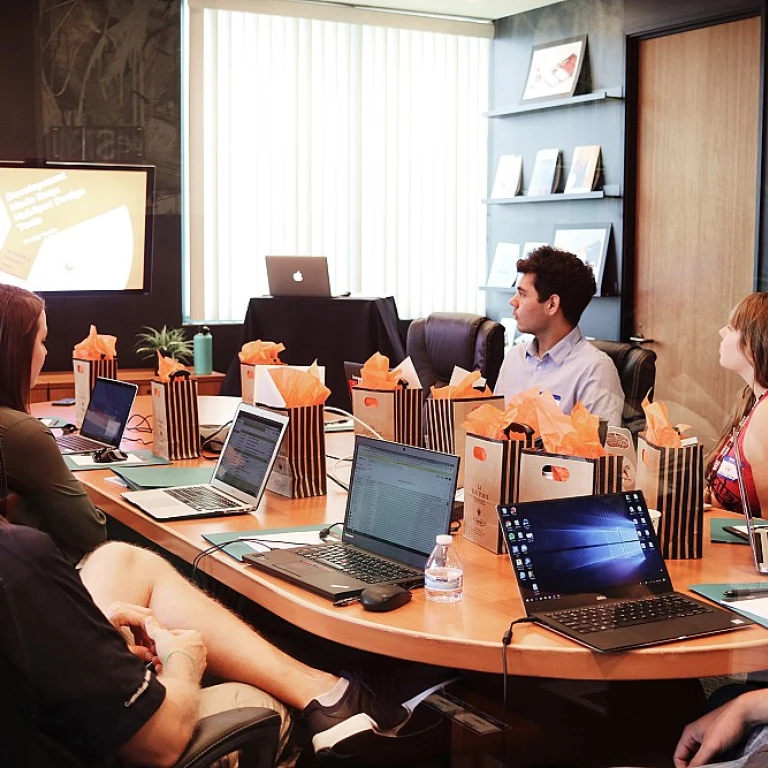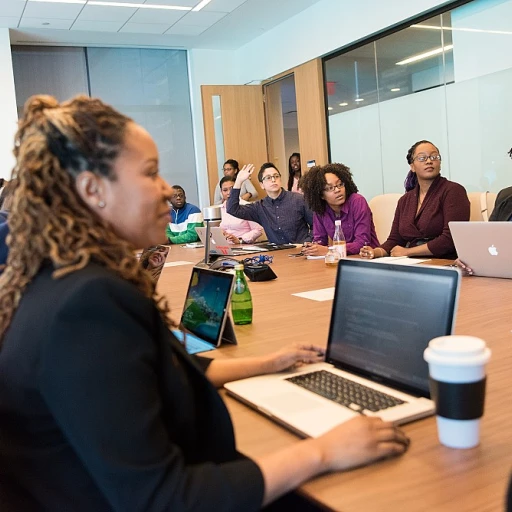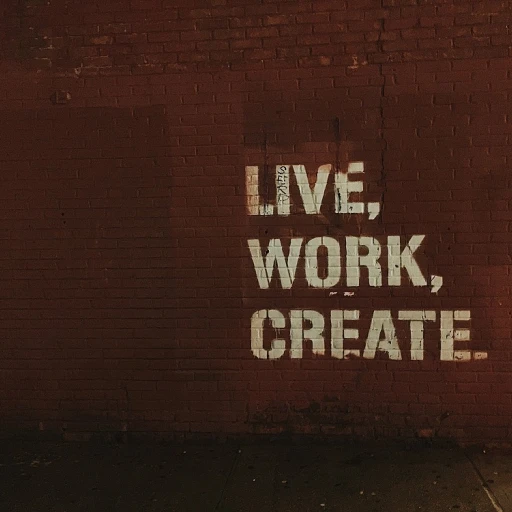
The Role of a Chief Human Resources Officer
Guiding Organizational Change
The role of a Chief Human Resources Officer (CHRO) is integral to shaping the trajectory of organizations amid dynamic business landscapes. At the heart of this responsibility lies the ability to effectively implement change through structured approaches, such as the ADKAR model. As the driving force for organizational change, CHROs are tasked with fostering awareness and desire among employees, ensuring they are equipped with the knowledge and ability to embrace new processes.The Catalyst for Change Management
In their capacity as strategic leaders, CHROs harness the principles of change management to navigate complex organizational transformations. The Prosci ADKAR model provides a valuable framework, aiding HR leaders in managing individual transitions and supporting team members throughout the change journey. By understanding and leveraging this model, CHROs can lead initiatives that align with long-term goals and reinforce positive change.Championing Employee Engagement and Support
The success of any change initiative largely depends on employee engagement. This is where the CHRO plays a vital role: promoting awareness and ensuring that team members possess the desire to support new directions. Reinforcement through training and continual learning becomes crucial, as these elements not only boost employees’ ability but also ensure sustained adoption of change. For those seeking a deeper dive into how CHROs navigate these transformations, exploring a career in change management can be enlightening. Such insights provide a comprehensive understanding of the intersection between HR leadership and effective change management.Introduction to the ADKAR Framework
Unveiling the Core Elements of ADKAR
The ADKAR framework, developed by Prosci, is a powerful change management tool designed to guide organizations through all phases of change. The model’s name is an acronym representing five key building blocks of successful change: Awareness, Desire, Knowledge, Ability, and Reinforcement. Each component of the ADKAR model serves a unique purpose in fostering effective change within an organization. Let's delve deeper into what each element entails and how it contributes to achieving change management success:- Awareness: This initial stage focuses on creating awareness of the need for change. Employees must understand the relevance and impact of the change, leading to better engagement and support.
- Desire: Following awareness, it's crucial to cultivate a genuine desire among team members to participate and support the change. This is where leadership plays a pivotal role in motivating and encouraging individuals to embrace the change initiative.
- Knowledge: To effectively implement change, individuals must acquire the necessary knowledge. This involves training and learning processes that equip employees with the required skills and understanding to navigate the change successfully.
- Ability: It is not enough to only have knowledge; employees also need the ability to put their skills into action. This component focuses on enabling team members to perform in the new environment proficiently.
- Reinforcement: To ensure that changes are sustained over the long term, reinforcement strategies must be implemented. This might include continuous support, feedback, and incentives to reinforce the desired behaviors and outcomes.
Applying ADKAR in HR Strategy
Integrating ADKAR into HR Strategies for Effective Change
Applying the ADKAR model in HR strategy is about fostering a culture of change that empowers and supports employees throughout transformative processes. This model provides HR leaders with a structured approach to guide their teams and organizations through effective change management. The ADKAR framework consists of five key objectives necessary for achieving successful change: awareness, desire, knowledge, ability, and reinforcement. By integrating these elements into HR strategies, organizations can seamlessly navigate the complexities of transformation.- Awareness: HR leaders must first focus on developing a deep understanding of why change is necessary. Creating awareness among team members about the drivers of change helps in gaining their support and buy-in. This can be achieved through regular communications, workshops, and learning sessions.
- Desire: It is crucial to cultivate a desire for change among employees. Encouraging team members to want to support and be part of the change requires understanding their motivations and aligning organizational goals with their personal values and career aspirations. Engagement initiatives and recognition programs can bolster this desire.
- Knowledge: To successfully implement change, HR must ensure that team members possess the necessary knowledge and skills. Providing targeted training programs and continuous learning opportunities helps bridge any knowledge gaps essential for the adoption of new systems and procedures.
- Ability: Knowledge alone is not enough—employees must also have the capability to apply what they've learned in real situations. HR can support this by offering hands-on training, mentorship, and resources that enhance employees' ability to adapt to new changes.
- Reinforcement: Sustaining change requires ongoing support and reinforcement to prevent regression to old habits. HR can employ feedback mechanisms, recognition, and reward systems to reinforce positive behaviors and outcomes.
Challenges in Implementing ADKAR
Confronting Barriers in Adoption
Implementing the ADKAR framework in an HR setting can present significant challenges. Organizations often grapple with resistance at both the individual and organizational levels. This includes developing awareness of the need for change, fostering a genuine desire among employees and team members to participate and support the process.
The Intricacies of Knowledge Transfer
Another critical challenge is ensuring that adequate knowledge and training are provided. The ability of employees and teams to embrace new methods and strategies is contingent upon the knowledge they acquire. Organizations often fail to align learning programs with the tangible needs of teams, which can also affect the reinforcement of new skills.
Overcoming Structural Hurdles
Prosci's methodology emphasizes effective change management by addressing structural barriers. However, the journey to successful change often encounters hurdles owing to misaligned organizational structures and management characteristics. Team leaders may neglect to fully support or commit, hindering the ability of employees to fully grasp the model change.
Monitoring and Sustaining Progress
Finally, establishing a robust monitoring framework is critical for the reinforcement stage. The failure to create a sustainable support system can dramatically affect long term results. Monitoring successes, especially in the alert new stages like model adkar, ensures the change can be appropriately integrated and appreciated by team members.
Ultimately, the true test for HR professionals lies in the rigorous application of the ADKAR model and providing necessary resources to facilitate change. With strategic planning and additional understanding of procedural dynamics, organizations can tackle the setbacks inherent in change management.
Case Studies: ADKAR in Action
Implementing ADKAR in Practice
Effectively integrating the ADKAR framework into human resource strategies can be elucidated through real-world case studies. These insights highlight the transformative power this model wielded in various organizations, effectively guiding them through the challenges of change management. One company exemplified success by prioritizing employee awareness. They realized that awareness of the need for change was critical. To achieve this, the HR team conducted interactive sessions to educate employees about upcoming changes, emphasizing the benefits aligned with the organizational goals. This comprehensive communication strategy ensured the team members were well-informed, ultimately fostering engagement and minimizing resistance to change. The emphasis on desire was highlighted in a different organizational setup where leadership invested in promoting a culture that inspired change. This involved tailored initiatives aimed at enhancing employees' desire, including engaging storytelling and platforms for team members to express concerns. Such initiatives bolstered personal connections to the organizational vision, making the transition smooth and boosting overall morale. Another enterprise invested heavily in training and development, showcasing how the knowledge and ability components of the ADKAR model played a pivotal role. By identifying skill gaps, HR leveraged targeted training programs, which not only equipped employees with the necessary skills but also instilled confidence in their ability to adapt successfully. Reinforcement in another setting was key to cementing long-term change. By implementing systematic reinforcement mechanisms, such as feedback loops and reward systems, the organization ensured that the change was sustained, eliciting persistent engagement from individuals. This reinforcement strategy was fundamental in transforming the change from a one-time event to an enduring improvement. The Prosci ADKAR model undoubtedly offers a solid framework to guide organizational change efforts. However, these case studies underscore that successful change requires a combination of attentiveness to individual needs and strategic planning to maneuver complex challenges.Future Trends in HR and Change Management
Transformations on the Horizon in HR Change Management
As organizations navigate an ever-changing landscape, the need for effective change management strategies, such as the ADKAR model, continues to rise. Leveraging the Prosci methodology, future trends in change management are poised to reshape the role of a Chief Human Resources Officer and their teams.- Data-Driven Decision Making: The integration of data analytics in HR strategies will empower leaders to drive change by making informed decisions. Knowledge and data collected through various channels enable HR teams to assess employee readiness, measure awareness change, and tailor training programs accordingly.
- Personalized Learning Paths: As individual needs become more apparent, customizing learning and reinforcement programs will be critical. This alignment aids in fostering each employee's ability and desire to embrace change, ensuring a successful transition for the organization.
- Enhanced Employee Support Systems: Creating robust support mechanisms can help in nurturing the workforce's knowledge ability. This aspect of change management is essential for building a strong desire among team members to engage in the transformation process actively.
- Adaptive Leadership Strategies: With change being a constant in today’s work environment, leadership models need to be more flexible. Training leaders to adapt their strategies according to the ADKAR model ensures that both awareness and desire for change are effectively addressed, facilitating long-term success.
- Collaborative Environment: Forward-thinking organizations will focus on fostering collaboration. Emphasizing team cohesion and a shared vision helps instill a culture of change acceptance, enhancing the overall effectiveness of change initiatives.












